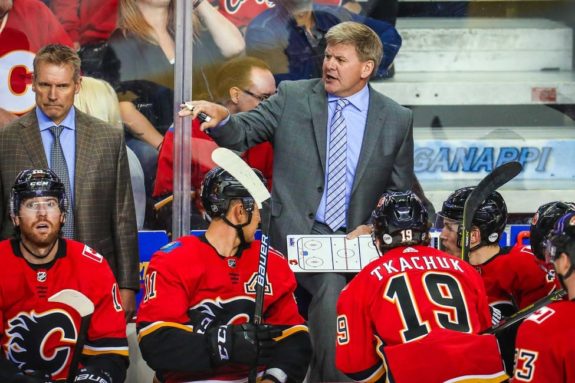The Calgary Flames lack a team vision. Not to be confused with a long-term goal – that’s rather obvious and league-wide. No, the Flames lack a vision in terms of how they play. How they need to play to achieve success past the regular season.
A team vision is a mentality that everyone in the organization adopts–something not all that different from a company culture. Never was this void more clear than the Flames’ last game of the 2019 season. When the situation became dire in Game 5 against Colorado, with the seconds of their seasons ticking preciously away, the reaction from Flames players was resoundingly flat.
It was abundantly clear who wanted to win that series. Nathan MacKinnon proved to be the player that every team wants when the playoffs start. That’s the funny thing about playing with urgency – everyone notices it regardless of skill level. Yes, MacKinnon is world-class and it showed, but he was clearly on another level come playoff time. That is the going rate for success in the playoffs. Teams that drain the physical and mental reserves go deep. Calgary was drastically empty-handed in that category.
The toughest adjustment going into next season falls to head coach Bill Peters and his team of coaches to figure out. His task of shifting the thinking of a Flames team set in their ways is not going to be an easy one. The job will be made easier with the help of captain Mark Giordano, coming off a Norris-winning season and a player who brings urgency on a nightly basis. Along with Giordano, there are a number of players who provide playoff-calibre urgency, but beyond that, the team has a handful of players who disappear for stretches at a time.
It’s not that those players aren’t as committed. There’s no question that this group is a team of professionals who want to win. The issue is that the Flames have a few players who are one-dimensional. Slumps happen. They happen to every full-time NHLer and they happen to every NHL franchise. On the Flames, there are certain players who need to learn a new method of hockey to fall back on, namely playing defence and simple hockey – you know, the types of things every NHLer espouses during every intermission interview. More than that, this simple type of hockey needs to be understood and accepted by everyone on the team. Defining how this looks is the job of Peters, as is instilling a belief in the system amongst the players. Onus then falls to the players to go out and execute, especially when frustrations inevitably rise up.
Moving Forward
The simple thing for players to do in the heat of the moment is to remember what they can control. They can’t control the calls the refs make, or the time left on the clock. But as Sidney Crosby advised MacKinnon before Game 1 against the Flames, “Just go attack them and dictate the pace of the game”. The Avalanche might have lost that game but they absolutely dictated the rest of the series.
Unless you’re Wayne Gretzky, Mario Lemieux, or Bobby Orr, you can’t always control when you’re going to score. Working with your teammates, moving your feet, and adjusting your attitude are simple things that Flames players can control, yet there are times when the fanbase and coaching staff are witness to noticeable hesitation. If the Flames want to move forward, they need to shore up the little things they can control first.

If insanity is doing the same thing over and over and expecting different results, the Flames are driving an entire fanbase absolutely mad. Expect the status quo in terms of the Flames roster this year; all of the players that earned them a first-place finish last season will still be there, with only one still yet to be figured out. But come playoff time, a status quo effort will queue a busy offseason for general manager Brad Treliving. Hopefully next spring will bring a change of scenery to a winter-dormant Flames team.